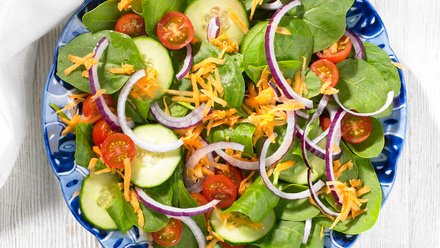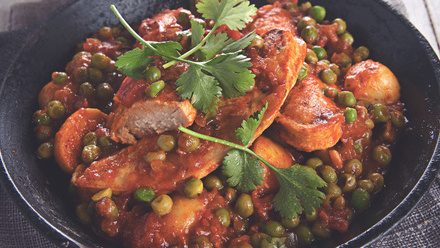Andrea Rymer shares her experience working as a dietitian at The Vegan Society, and explores some developments in the organisation’s Vegan and Thriving health and nutrition campaign.
According to data from 2020, UK consumption rates for vegan alternatives to dairy, ready meals and seafood are the highest in Europe. The number of vegan meals eaten at lunch or dinner soared 46% between 2019 and 2020 and more than a quarter of all evening meals in the UK are vegan or vegetarian.
For those who choose to follow a vegan lifestyle, it is possible to enjoy well-planned diets that can support healthy living in people of all ages, and during pregnancy and breastfeeding. Good nutritional planning includes appropriate use of fortified foods and supplementation. With the above statistics in mind, it has never been more important for dietitians to be pioneers in plant-based diets, ensuring nutritional adequacy for anyone wanting to increase their intake of plant-based foods.
What nutritional benefits can we expect from the recipes?
The nutrition team at The Vegan Society provides reliable information about vegan health and nutrition to the general public, the vegan community, caterers and health and nutrition professionals. We also support campaigns and policy work by providing evidence-based information about vegan diets. I have been a registered dietitian for six years, and have specialised in hospital catering, learning disabilities and weight management.
I am now using my catering and dietetic skills to support the work of The Vegan Society, which involves working with our Communications and Campaigns Officer on the Vegan and Thriving campaign. This has really opened my eyes to how broad a dietetic role can be, and my aim is to ensure each recipe fits a healthy nutritional standard to support anyone wanting to increase their intake of plant-based foods. As well as limiting saturated fat and added salt and sugar and featuring at least two portions of fruit and vegetables, our recipes also include:
- Protein optimisation, ensuring a quality plant protein source is present in each recipe, essential for growth and repair of the body and maintenance of good health in all stages of life
- Ingredients that provide a rich source of calcium, including calcium-fortified products
- Plant sources of iron, with rich sources of vitamin C to support iron absorption.
How were the recipes developed?
I worked with the project manager for Vegan and Thriving to develop a recipe specification, which was shared with the external agency we worked with on the campaign. We included details on nutritional targets, as well as points around accessibility such as using budget-friendly ingredients which can all be found in supermarkets. Upon receiving suggested recipes back from the agency, I analysed each one using Nutritics software. Some recipes fell outside of our criteria, resulting in a collaborative process in which I provided tweaks to the agency.
The recipes were then practised, perfected, photographed, videoed and uploaded to the website along with ingredient information, a method section and a nutritional profile per serving as well as per 100g.
How can we use these recipes in our professional practice?
With a strong emphasis on sustainable diets and increasing our consumption of plant proteins, public healthcare caterers may be interested in increasing the plant-based options, whether that be on patient menus or in staff canteens.
With statistics showing more and more people increasing plant-based options in their diet, it is likely that dietitians will experience more patients requesting advice for plant-based diets in various settings.
As the Vegan and Thriving recipes have all been nutritionally analysed, dietitians and catering providers can be reassured that nutritional data and ingredients lists are accurate for each recipe, with helpful tags for groups who may require specific dietary adaptations, e.g. easily adaptable for gluten-free diets.
Take-away messages
- Those who choose to eat a well-planned vegan diet can thrive, replacing animal products with suitable plant-based alternatives to ensure nutrition is not compromised.
- Vegan and Thriving recipes can support anyone with an interest in increasing their intake of plant-based foods.
- Professionals can use these recipes as a valuable resource when required in private practice, one-to-one NHS consultations and education sessions, as well as for menu developments.
- Why not try one of the Vegan and Thriving recipes and tell us what you think by tweeting your dish and tagging us @TheVeganSociety followed by the hashtag #VeganAndThriving.







